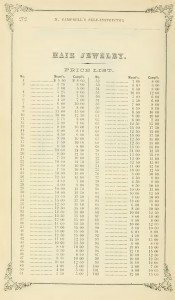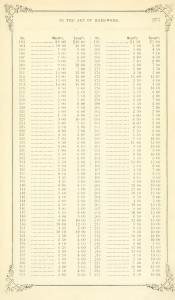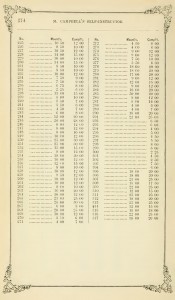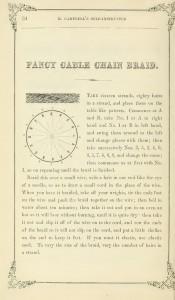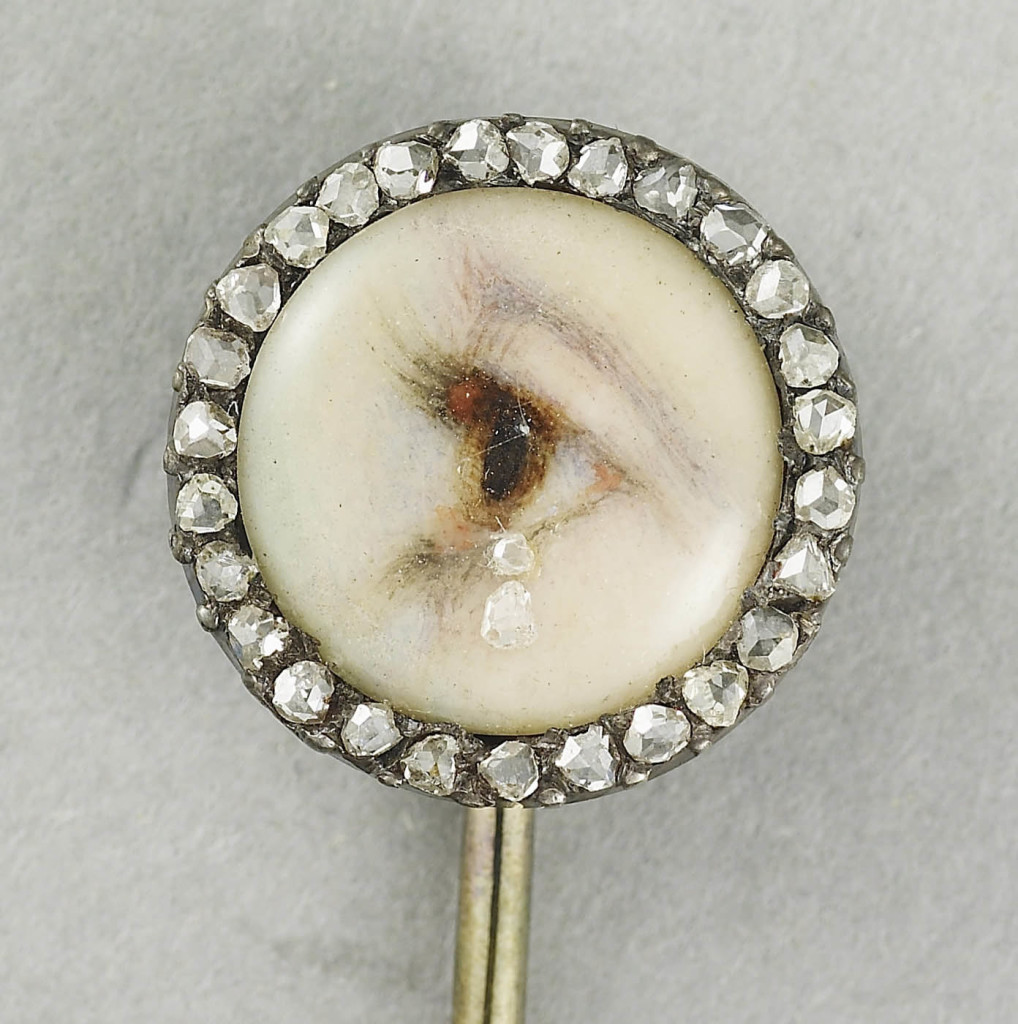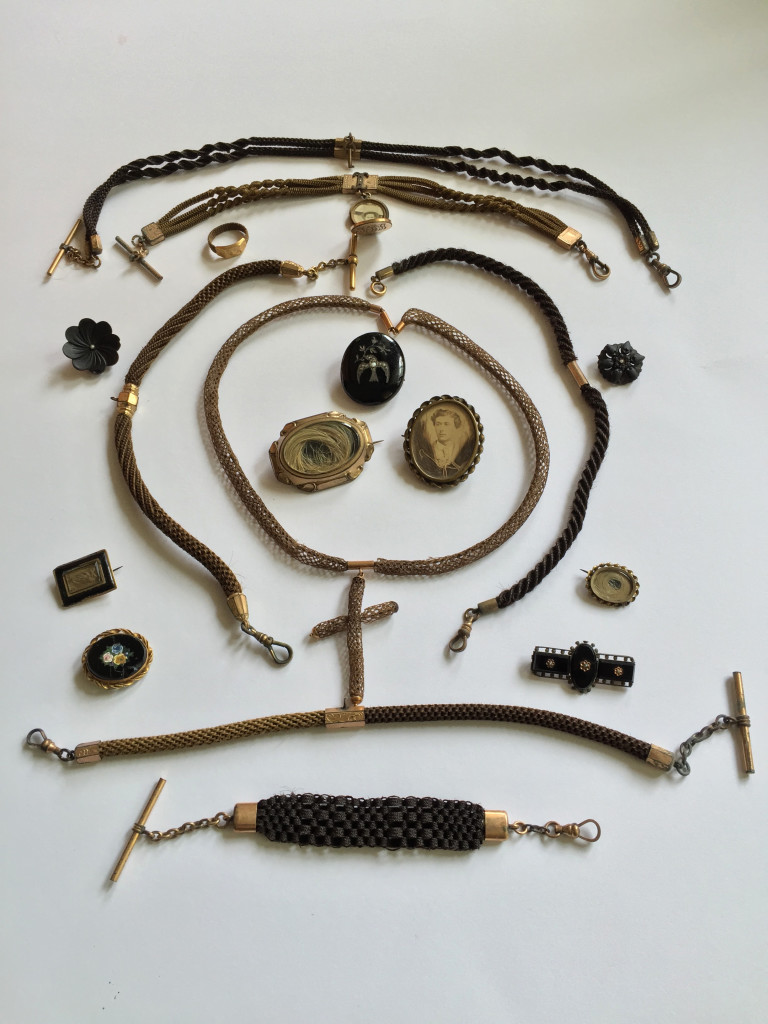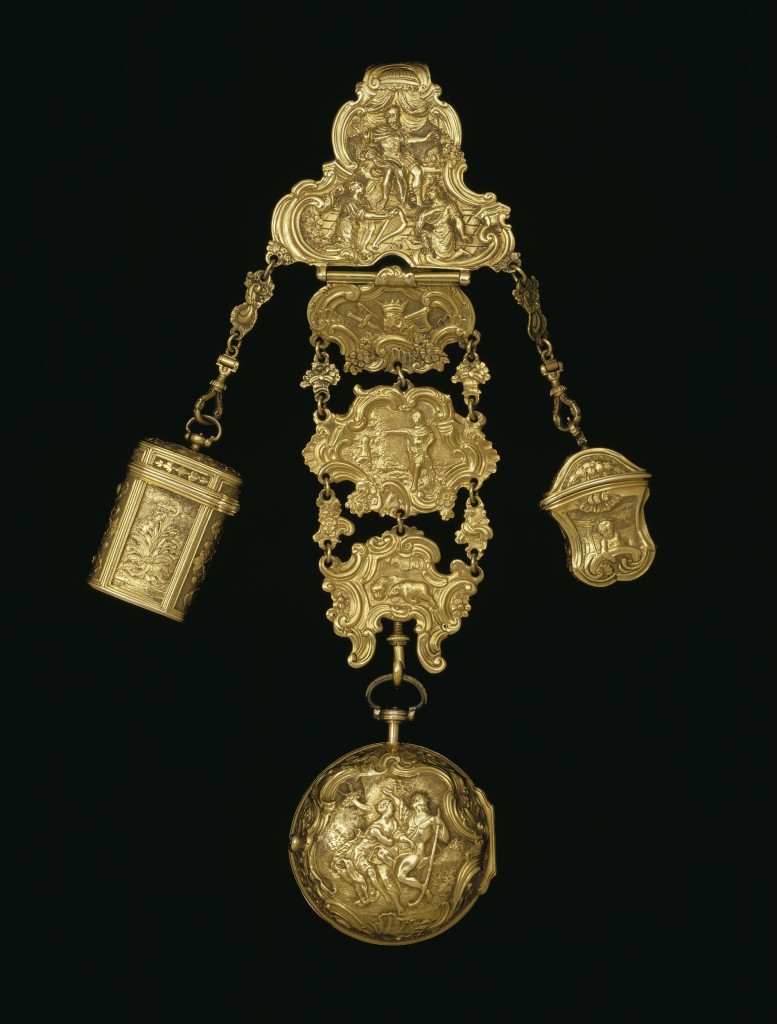Art of Hairwork 5: Victorian Hairwork Fob Chain With Black Enamel Fittings
Symbolism in watch chains and their fittings are primarily the key identifier when it comes to many of the surviving chains today. The identification can lead us to note the quality of the piece and its value.
From catalogues of the 1860s to the end of the century, each element within a preview of the desired piece could be mixed at matched to its fittings. These fittings could be chosen by the person who commissioned the chain to personalise it with their desired sentiment.
As these fittings ranged in quality, from pinchbeck and lower grade alloys, to higher gold content, this is what we have to take into account for how this piece could have been worn within its social level.
From this, we look to the hairwork and see just how incredible and detailed the weave is, and also to note is the colour. Predominately, brown is the most typical of hair found commonly today, followed by darker tones, while blonde or red are on the other end of the scale.
This very charming piece has blonde hair, gold fittings (with a good deal of weight), inlaid
enamel acorn motifs and the wonderful buckle to the loop itself. As we know, the acorn motif was found as a charm on fob chains and bracelets, the acorn is often seen an ancillary motif in jewellery, balancing other symbols or complimenting a mourning sentiment, but more rarely being the prominent, singular motif used for a piece.
Often seen on military tombs, the acorn can stand for power, authority or victory, however it is also a statement of longevity, strong new growth and new life.
The cable twisted chain braid has a secondary loop around the main cable of hairwork, giving the piece an extra dimension and really showing off just how the level of delicacy over simpler weaves resonated with the fashion of how it was worn. Certainly, this piece is as decorative as it is function. As noted by Godey’s A Series of Papers on The Hair (1855): “Among the many curious occupations of the metropolis of London, is that of the human hair merchant. Of these there are several, and they import between them more than fifty tons of hair annually.” Colour matching the hair was as important as the weave itself, ensuring ease of construction for the hair weaver and that the client gets a product back which reflects the hair given to the weaver. This blonde piece is remarkable in that it still retains its original lustre and softness.
“TAKE sixteen strands, eighty hairs in a strand, and place them on the table like pattern. Commence at A and B, take No. 1 at A in righthand and No. 1 at B in left hand, and swing them around to the left and change places with them ; then take successively Nos. 3, 5, 2, 4, 6, 3, 5, 7, 4, G, 8, and change the same; then commence as at first with No. 1, so on repeating until the braid is finished.
Braid this over a small wire, with a hole in one end like the eye of a needle, so as to draw a small cord in the place of the wire. When you have it braided, take off your weights, tie the ends fast on the wire and push the braid together on the wire; then boil in water about ten minutes; then take it out and put in an oven as hot as it will bear without burning, until it is quite dry then take it out and slip it oft’ of the wire on to the cord, and sew the ends of the braid so it will not slip on the cord, and put a little shellac on the end to keep it fast. If you want it elastic, use elastic cord. To vary the size of the braid, vary the number of hairs in a strand.”
Finally, let’s look at the belt/buckle/garter motif. The closest in Mark Campbell’s ‘Art of Hair Work’ matches with these styles, yet uses its motif in the loop well:
Often a symbol can be so ubiquitous that it disappears from sight. It’s commonly used, often present with other symbols and it’s just accepted that it’s there.
Let’s turn those ideas around on themselves and clasp together the meaning of the belt/buckle in jewellery symbolism. If you’re a collector of mourning and sentimental jewels, there’s a good chance you’ve got several pieces with this symbol on it, be it a bracelet, ring, locket – the buckle can be seen in just about every form of jewellery. This is a symbol that became popular in the 19th century and its meaning is actually quite simple.
The simple answer is that the belt/buckle is much like the serpent, it represents eternity, fidelity/loyalty, strength and protection. As the symbol curves around and threads back into itself, creating an eternal loop, it threads through the buckle and tightly overlaps itself.
As an object of use, the belt dates to the prehistoric, basically as necessity dictates the use of a way to either hold up any clothing below the waist or fasten objects to the waistline for ease of access. This could be as practical as holding up a pair of pants or as precious as holding a ceremonial/ ecclesiastical object for decoration. The device is a perfect marriage of form and function. And to accompany this, as long as humans have been mining metals, at least recorded to the Iron Age, the buckle has accompanied the belt to hold fast to the waist.
From a high level perspective, the belt and buckle split the body in two, creating a clear delineation through the waist from the northern and southern halves of the body, but also holding the body together through this middle separation through its interconnecting and tight nature. As we move on, you’ll see how this relates to its context with other symbols.
Essentially, the buckle/belt motif relates back to this unbreakable strength of upholding loyalty and in turn, memory forever. Its eternal loop is combined by its strength with which it holds up the virtue that it contains. When related back to the family as a unit, a loved one who is lost would ordinarily break down the family and cause untold grief and sadness, however, the presentation of this symbol from a loved one as representation of the person who has passed on only intensifies the eternal strength and love for the person, as well as the strength of the family to stay together. This symbol also relates to love tokens, for this eternal loving strength can obviously be applied to the living; it is a symbol that is all encompassing. So, while many rings and bracelets took on the shape of the buckle in the 19th century, they don’t necessarily denote mourning or death.
There is where we have to look at the symbol when it is combined with other symbols to discover its nature in relation to the piece. Look at this particular piece with the upside-down torch. Note how the buckle is not only a decorative border, but it is in fact wrapping itself around the life cut short and strengthening this with an eternal loop that forever holds tight. This is important, as the love and gravity of the symbol are enhanced by the buckle.
When the buckle is worn as a complete motif, as it becomes the ring in this case, think of how it is worn. This buckle is tight around the finger, the sentiment of love becomes part of the body, in effect, creating that bond of eternal love around the very person. The person becomes the symbol.
Late 19th century rings are wonderful showcases for the depiction of the buckle – be it mourning or sentimental token.

It should be noted that you can find the belt/buckle motif on rings as secondary symbols in enamel, not just making the band itself. As it was a multi-purpose symbol, you can also find them in silver and other materials quite commonly from the latter 19th century into the 20th. For many sentimental jewels, the garter as a symbol does infringe upon the buckle symbol from time to time, in those particular cases, it becomes a symbol of chastity and virtue.
Moving back into the idea of the belt/buckle in context with other symbols, this particular piece shows the buckle with the ‘In Memory Of’ sentiment. This once again reflects the eternal strength of memory and in this case, the dedication itself becomes the symbol, which has become enhanced by the belt/buckle. This is quite common from the mid 19th century on, the rise of the belt/buckle had become part of the cultural lexicon.
In the case of this bracelet, you can see how its decoration once again turns the wearer into the symbol of strong affection and love. Wrapped around the wrist, it promotes a strong connection of the wearer to the person who commissioned it.
As with all these symbols, loyalty and fidelity relates to the tightness of the eternal love motif that the wearer promotes through their keepsake.
And there we have it. From the simplest of accessories, and one of the most common, we have taken a look at how hair was braided, the industry from which it came, the fashion which made it necessary and the Victorian view on love and sentimentality.





